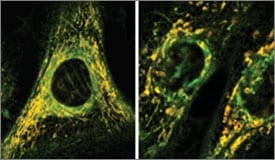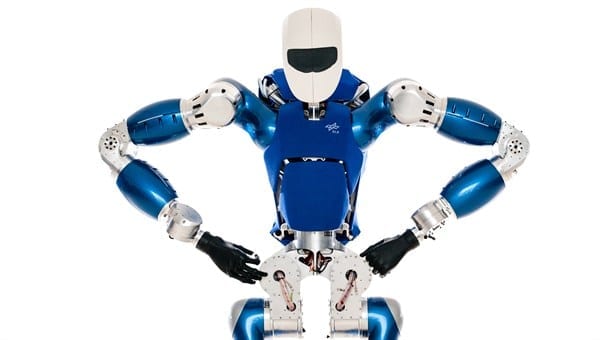
A University of Oklahoma-developed theory provides the rationale for the next-generation particle accelerator—the International Linear Collider.
The discovery of the Higgs boson at the CERN Large Hadron Collider in Geneva Switzerland this past year prompted particle physicists to look ahead to the development of the ILC, an electron-positron collider designed to measure in detail all the properties of the newly discovered Higgs particle.
Howard Baer, professor in the OU Homer L. Dodge Department of Physics and Astronomy, was one of the lead authors of the five-volume ILC Technical Design Report published on June 12. The report, which presents the latest and most technologically advanced blueprint for construction of the ILC, was celebrated recently by the global particle physics community in three consecutive events in Asia, Europe and the Americas.
The OU physicist has spent much of his career developing the theory of supersymmetry or SUSY—a theory which advances particle physics beyond the Higgs boson into new and unexplored territory. SUSY provides one of the major motivations for constructing a next-generation particle collider such as the ILC to complement and advance the discovery capabilities of the LHC at CERN.
The ILC will allow particle physicists to study the Higgs particle with much higher precision than is possible at the LHC. However, Baer along with postdocs and students at OU have proposed the theory “radiatively-driven natural supersymmetry,” which predicts that new partner particles of the Higgs known as higgsinos should be produced at the ILC. The properties of higgsinos are such that they may effectively be invisible to searches at LHC.
Baer has developed computer code over a 25-year period to calculate super particle masses and production rates for the LHC in CERN. The ILC would be a precision microscope for studying subatomic matter at a deeper level than is possible at LHC.
The Latest Bing News on:
Next-Generation Particle Collider
- Removing Russia from CERN ‘helps Putin’, scientists fearon May 8, 2024 at 6:00 am
The recent decision by Geneva-based CERN to stop working with Russia sets a dangerous precedent for science, say several researchers.
- Next-generation triggers for HL-LHC and beyondon May 3, 2024 at 5:56 am
A new five-year-long project aims to accelerate novel computing, engineering and scientific ideas for the ATLAS and CMS upgrades.
- This machine could replace the Hadron Collider and unlock the mysteries of the universeon April 22, 2024 at 4:59 pm
However, with CERN announcing that the end of the high-luminosity stage of the LHC by 2040, many experts are already planning what’s next in store for some of the most complex research right now. The ...
- Next-Generation Particle Collider Could 'Unveil Universe's Mysteries'on April 14, 2024 at 5:00 pm
Money Talks News Next-Generation Particle Collider Could 'Unveil Universe's Mysteries' Posted: April 15, 2024 | Last updated: April 15, 2024 Plans are underway for a new, larger particle collider ...
- Advanced Atomic Particle Collider Going Up on Long Islandon April 11, 2024 at 5:00 pm
This particle collider is unique as it will be the only ... as the site of the world’s only next-generation polarized Electron-Ion Collider. Following negotiations between Empire State ...
- The next-generation triggers for CERN detectorson April 11, 2024 at 12:16 pm
The experiments at the Large Hadron Collider (LHC) require high-performance ... The key objective of the five-year Next-Generation Triggers (NextGen) project is to get more physics information ...
The Latest Google Headlines on:
Next-Generation Particle Collider
[google_news title=”” keyword=”Next-Generation Particle Collider” num_posts=”10″ blurb_length=”0″ show_thumb=”left”]
The Latest Bing News on:
International Linear Collider
- China can build the largest collider on Earth, CERN president sayson May 5, 2024 at 10:21 pm
Eliezer Rabinovici says he is 'confident' Chinese scientists can build the world's largest particle accelerator The proposed Circular Electron Positron Collider has caused much debate in China over ...
- Superfluid helium: the quantum curiosity that enables huge physics experimentson May 5, 2024 at 5:00 pm
A future International Linear Collider – a possible successor to the LHC – would also employ superfluid-cooled SRFs. While superfluid-cooled magnets are used in particle accelerators, that was not ...
- Every David Leitch Movie, Ranked by Rewatchabilityon May 4, 2024 at 6:30 pm
David Leitch began his career as a stunt performer before stepping into the director’s chair; after doubling for A-list actors like Brad Pitt and Jean-Claude Van Damme, Leitch was given the ...
- Large Hadron Collider experiment zeroes in on magnetic monopoleson April 25, 2024 at 5:00 pm
In its quest for these particles, which have a magnetic charge and are predicted by several theories that extend the Standard Model, the MoEDAL collaboration at the Large Hadron Collider (LHC ...
- This machine could replace the Hadron Collider and unlock the mysteries of the universeon April 22, 2024 at 4:59 pm
Located in Geneva, the Large Hadron Collider (LHC) is the world’s largest and highest-energy particle collider in the world. Image: Dominguez, Daniel / CERN This machine has made it possible for ...
- What is the Large Hadron Collider at CERN and what does it do?on April 21, 2024 at 5:00 pm
The Large Hadron Collider at CERN is a testament to human ingenuity and the power of international scientific collaboration. As we continue to explore the data generated by this remarkable machine ...
- ‘Late Night with the Devil’ Possesses Impressive Global Box Office Haulon April 14, 2024 at 5:00 pm
It was equally beloved by fans; the film’s audience score on RT stands at 82%. In his review, Collider’s Chase Hutchinson described it as a “frequently sinister if occasionally slight genre ...
- The 10 Best Bryan Cranston Movies, Rankedon April 5, 2024 at 5:00 pm
He's in the (movie) empire business. Fans of Bryan Cranston can catch the beloved actor in recent films like Kung Fu Panda 4 and Argylle, where he continues to prove his remarkable talent. A six ...
- Matt Goldbergon February 26, 2024 at 4:00 pm
Matt Goldberg has been an editor with Collider since 2007 ... reviews and covered major film festivals including the Toronto International Film Festival and the Sundance Film Festival.
- large hadron collideron March 2, 2023 at 4:00 pm
Imagine having the opportunity to turn a wrench on the Space Shuttle or the Large Hadron Collider (LHC) — not only do you get to spend some quality time with some of the most advanced machines ...
The Latest Google Headlines on:
International Linear Collider
[google_news title=”” keyword=”International Linear Collider” num_posts=”10″ blurb_length=”0″ show_thumb=”left”]











